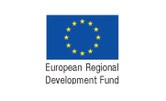Anna Levina, Junior Research Group Leader, University of Tübingen | Self-organization of neuronal networks and its assessment under subsampling
| When |
Dec 19, 2017
from 05:15 PM to 06:45 PM |
|---|---|
| Where | BCF Lecture Hall, Hansastr. 9a |
| Contact Name | Prof. Dr. Stefan Rotter |
| Add event to calendar |
|
Abstract
Structural inhomogeneities in synaptic efficacies have a strong impact on population response dynamics of cortical networks and are believed to play an important role in their functioning. However, little is known about how such inhomogeneities could evolve by means of synaptic plasticity. Here we present an adaptive model of a neuronal network that combines two different types of plasticity, STDP and synaptic scaling. The plasticity rules yield both long-tailed distributions of synaptic weights and firing rates. Simultaneously, a highly connected subnetwork of driver neurons with strong synapses emerges. Coincident spiking activity of several driver cells can evoke population bursts and driver cells have similar dynamical properties as leader neurons found experimentally. Our model allows us to observe the delicate interplay between structural and dynamical properties of the emergent inhomogeneities. It is simple, robust to parameter changes and able to explain a multitude of different experimental findings in one basic network.
In real-world applications, observations are often constrained to a small fraction of a system. For example, reconstruction of the cortical network topology and statistics, as one we attempted to mimic in the model from the first part of the talk, is based only on a tiny fraction of all synaptic connections. Such spatial subsampling can be caused by the inaccessibility or the sheer size of the system, and cannot be overcome by longer sampling. Spatial subsampling can strongly bias inferences about a system’s aggregated properties. To overcome the bias, we derive analytically a subsampling scaling framework that is applicable to different observables, including distributions of neuronal avalanches, of number of people infected during an epidemic outbreak, and of node degrees. We demonstrate how to infer the correct distributions of the underlying full system, how to apply it to distinguish critical from subcritical systems, and how to disentangle subsampling and finite size effects. Lastly, we apply subsampling scaling to neuronal avalanche models and to recordings from developing neural networks. We show that only mature, but not young networks follow power-law scaling, indicating self-organization to criticality during development.
Literature
- Levina, A., & Priesemann, V. (2017). Subsampling scaling. /Nature Communications/, /8/, 15140. (Link)
- Stumpf, M. P. H., Wiuf, C., & May, R. M. (2005). Subnets of scale-free networks are not scale-free: sampling properties of networks. /Proceedings of the National Academy of Sciences of the United States of America/, /102/(12), 4221–4224 (Link)
- Effenberger, F., Jost, J., & Levina, A. (2015). Self-organization in Balanced State Networks by STDP and Homeostatic Plasticity. /PLoS Computational Biology/, /11/(9), 1–30. (Link)











